Session I

Associate Prof. Huichan Zhao
Tsinghua University
Advances in High-Power-Density Dielectric Elastomer Artificial Muscles and their Applications
The landmark papers by Pelrine et al. marked the beginning of the use of dielectric elastomer (DE) actuators (and sensors) for soft robotics. They showed that a voltage applied through the thickness of a soft material could produce large strains as a result of the Maxwell stress between charges on the two electrodes. Subsequent works have shown that DE-based actuators are particularly attractive for many soft robotic applications because they exhibit large energy densities with large strains and muscle-like response times. In recent years, we’ve been focusing on developing new configurations, models, fabrication, and design methods for long-life-cycle, high-power-density dielectric elastomer artificial muscles. I’ll present some of our recent work on such aspects and their applications in wearables, microrobotics, and other devices that require compact and high-power actuators.
Huichan Zhao is an Associate Professor in the Department of Mechanical Engineering at Tsinghua University. She received her Bachelor’s degree in Mechanical Engineering from Tsinghua University in 2012, and PhD degree from Cornell University in 2017. During 2017-2018, she was a postdoc at Harvard University. Her research interests include soft robotics, bioinspired robotics, smart materials, flexible sensors and actuators, etc. Some of her work were published in Nature, Science Robotics, Nature Communications, IEEE Transactions on Robotics, Advanced Functional Materials, etc. She served as an Associate Editor for IEEE Transactions on Robotics from 2021 to 2024, and as an Editor since 2024. She was listed in the 30 under 30 Forbes China in 2018 and MIT Technology Review Innovators Under 35 China in 2020. She got the Xiong Youlun Zhihu Excellent Young Scientist Award and The Alibaba Damo Academy Young Fellow Award in 2021.

Prof. Nianfeng Wang
South China University of Technology
Research and Application of Large-stroke Precision Positioning Robot Based on Corrugated Flexure Beam
Unlike traditional rigid mechanisms, compliant mechanisms (CMs) transfer force/ displacement and energy through their deformation. They have the advantages of no clearance, no friction, small assembly error, and easy processing, so CMs have become an important branch of mechanical engineering and have been widely applied in precision engineering, bioengineering, and optical communication. With the development of precise positioning technology and the increasing demand for cross-scale integrated operations, scholars are currently paying extensive attention to the design of large-stroke compliant mechanisms. In pursuit of this research goal, we are currently focusing on the design and optimization of compliant translational joints, rotational joints, and robots with multiple degree-of-freedom with corrugated flexure segments. Corrugated flexure segments are used to make up a periodic curved corrugated flexure beam with greater compliance to expand the motion range of the compliant joint. Based on the Maxwell–Mohr method and compliance matrix method, the close-formed solution of its spatial compliance is obtained. The type synthesis of planar parallel mechanism is also discussed, and a novel workspace called the prescribed orientation dexterous workspace (PFOW) is proposed, which considers initial orientation and local range of rotation. Performance optimization and graphical performance comparison of some planar 3-DOF PPMs are carried out, and the specific type and configuration with the optimal comprehensive performance can be obtained for a preset performance preference. Then for specific positioning and assembly tasks, based on the compliant translational/rotational joints, compact compliant robots with multi-DOF are designed, aimed at achieving versatile workspace for various postures.
Prof. Nianfeng Wang graduated from the School of Mechatronics Engineering of Harbin Institute of Technology in 2000 and 2002, respectively, and received his bachelor's and master's degrees. He graduated from the School of Mechanical and Aerospace of Nanyang Technological University in Singapore in June 2008 with a doctorate in engineering. He has been with the South China University of Technology, Guangzhou, China, as a Professor, since 2010. He hosted five national-level projects (including one National Natural Science Foundation key joint project and one National key R&D project) and more than 10 provincial and ministerial-level projects. He has long been engaged in the research and development of compliant mechanisms, robotics, machine vision, as well as structural topology optimization. He has published more than 100 papers, of which more than 100 papers have been included in SCI and EI. He has applied for more than 100 invention patents and authorized more than 40 invention patents.
Session II

Associate Prof. Longfei Zhao
Beihang University
Orinithopter Vector Control by Micro-Motion Mechanism
Flapping wings generate propulsion, lift and control forces simultaneously,acting as a periodic vector generator. Birds, insects, have achieved enviable flight efficiency and maneuverability through this flap-generated vector, which is completely different from traditional aircraft that relies on control surfaces deflection. In this talk, typical mechanisms and control methods of artificial flapping-wing aircraft will be analyzed, followed by our recent research progress in the aerodynamic design, flapping mechanism, servo control, etc. of long-endurance large-scale flapping-wing aircraft and small sparrow flapping-wing aircraft, as well as relative applications in military and civilian fields.
Longfei Zhao received the Ph.D. degree in mechatronics from Beihang University, Beijing, China, in 2018. He is currently an Associate Professor with Beihang University. His research interests include aerodynamic analysis and modeling, control system design, and simulation.

Prof. Hongwei Guo
Harbin Institute of Technology
Research progress and prospects of space deployable structures
Aerospace technology is an important symbol of the national scientific and technological level. In recent years, China has implemented major aerospace technology projects such as space station, high-resolution Earth observation, and deep space exploration. Deployable structure is the core equipment for expanding aerospace aircraft functions and improving performance, and aerospace deployable structure has become a technological frontier and academic hotspot in the international aerospace field. The report introduces the progress, theoretical and technological breakthroughs, and applications of space deployable structures. It also prospects and summarizes the development trend of space deployable structures.
Prof. Hongwei Guo, Harbin Institute of Technology, recognized as a Changjiang Scholar, and Outstanding Youth of National Defense Science and Technology Foundation. His primary research focus on folding and deformation mechanisms of aerospace vehicles, such as morphing wing of aircraft and space deployable structures. He has received one second prize of National Technology Invention Award, three first prizes of Heilongjiang Province Technology Invention Award, and two first prizes of National Defense Science and Technology Progress Award, published three academic monographs and over 100 SCI/EI papers, and has over 80 invention patents authorized.
Session III

Prof. Wenfu Xu
Harbin Institute of Technology
Self-takeoff and Agile Maneuver Flight of An Eagle-scale Flapping-wing Robot: System Design and Wing-Tail Collaborative Control
In nature, eagles, hawks and other raptors exhibit remarkable hunting abilities through their adept use of rapid aerial maneuvers. The key to achieving such exceptional maneuverability lies in the dynamic adjustment of the distance between the center of gravity (COG) and aerodynamic center (AC) across a wide range. Drawing inspiration from this natural phenomenon, we have developed a biomimetic flapping-wing robot with agile flying capabilities. By coordinating adjustments in wing-tail distance and attitude, we can effectively manipulate the relative positioning of the robot's COG and AC, as well as modulate wing and tail moments generated with respect to COG, thereby influencing climbing and descending characteristics. This enhanced agility allows us to define and achieve 13 Dynamic Flying Primitives (DFPs), including ascend and pull-up, ascend and inverted flight, dive and inverted flight, among others. Furthermore, by combining different DFPs, we have successfully executed 9 typical maneuvers such as figure-of-eight somersaults, inverted flight maneuvers, large-angle dives followed by steeply climbs, etc., all for the first time on flapping-wing robots. Moreover, inspired by the takeoff process of Ospreys, we proposed a bio-inspired self-takeoff strategy. Finally, outdoor flying tests have been conducted to validate that our biologically-inspired flapping-wing flying robot equipped with a self-adjustment strategy for wing-tail distance and attitude can achieve unprecedented levels of agile maneuverability.
Wenfu Xu is currently a professor and the vice dean of the School of Mechanical and Electrical Engineering and Automation, Harbin Institute of Technology, Shenzhen 518055. He is also a national high-level leading talents, IEEE Senior Member, Elsevier China Highly Cited Scholar and Top 2% Global Scientists. His research interests include biomimetic robots and special robots. He has led 16 national level scientific research projects, including 6 national level key projects. He has published over 150 academic papers as the first or corresponding author, including over 80 papers in SCI journals and over 60 papers in JCR Q1 Zone. He also published 4 academic monographs and 2 textbooks, and obtained more than 60 authorized national invention patents. His research results have been applied to the national aerospace engineering projects. He has received two first prizes for ministerial level scientific and technological progress.

Associate Prof. Shuguang Li
Tsinghua University
Origami for bio-inspired robotics: from exoskeleton to endoskeleton
Origami structures and mechanisms have myriad applications in the robotics field. We focus on the adoption of origami as the exoskeletons and endoskeletons of our robots. We proposed a novel concept of robotic metamorphosis. This method extends the capabilities of a robot by enabling metamorphosis using self-folding origami exoskeletons. Activated by heat, each exoskeleton is self-folded from a rectangular sheet, extending the capabilities of the initial robot, such as enabling the manipulation of objects or locomotion on the ground, water, or air. In addition, we invented a novel architecture for fluid-driven origami-inspired artificial muscles (FOAMs). These actuators require only an origami-like endoskeleton, a flexible skin, and a fluid medium. They can be rapidly fabricated using various materials at multiple scales, and they can also be designed to achieve multi-axial and sequential motions. The performances of these actuators are all equal to, or above, natural muscles.
Shuguang Li is an Associate Professor in the Department of Mechanical Engineering at Tsinghua University (Beijing, China). Before joining Tsinghua, he was a Postdoc Fellow and Research Associate at Harvard, MIT, and Cornell. His current research interests include origami robotics, collective robotics, and soft robotics. His research articles have appeared in leading academic journals including Nature, PNAS, and Science Robotics, and have been covered by various media outlets globally, including NPR, BBC, Xinhua News Agency, CCTV, Discovery News, Scientific American, Forbes, Associated Press, MIT Technology Review, and National Geographic Magazine.
Session IV
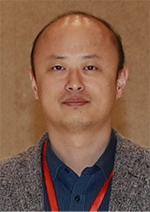
Prof. Qining Wang
Peking University
Wearable Mechanisms with Hybrid Actuators
Wearable robotic devices interact with humans by applying the assistance/resistance. Designing actuations in mimicking the natural activation patterns of human muscles is a promising way to optimize the performance of wearable robots. In this talk, recent progress on this topic in my research group will be presented. Firstly, a bioinspired cable-driven actuation system is introduced, which is capable of providing anisometric contractions assistance or nearly acting as a transparent device in an efficient manner. Secondly, a novel rigid-soft hybrid exoskeleton is presented, which can provide bidirectional interventions safely for knee joint motion. Thirdly, different wearable mechanisms with various actuators will be shown. In the end, the results of using these mechanisms on daily activities and clinical applications will the demonstrated.
Qining Wang received the Ph.D. degree in dynamics and control from Peking University, Beijing, China, in 2009. He is currently a Full Professor with the College of Engineering, Peking University. He serves as the Vice-Dean with the College of Engineering and director of the Robotics Center with the Institute of Artificial Intelligence, Peking University. He has authored/coauthored more than 200 scientific papers in international journals and refereed conference proceedings. His research interests include wearable robotics and human–machine interfaces. Prof. Wang was an Associate Editor for IEEE ROBOTICS AND AUTOMATION MAGAZINE from 2016 to 2018, and a Technical Editor for IEEE/ASME TRANSACTIONS ONMECHATRONICS from 2017 to 2020. He has been an Associate Editor for IEEE TRANSACTIONS ON MEDICAL ROBOTICS AND BIONICS since 2018 and Mechatronics since 2022.
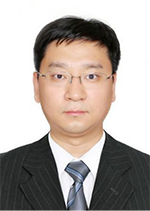
Prof. Zhiyuan Yu
Beijing Institute of Precision Mechatronics and Controls
Research on exoskeleton robot for efficient human-exoskeleton integration
Exoskeleton robots are intelligent systems that conform to the structural characteristics of the human body and can be worn outside the human body. Based on the design theory and method of human-exoskeleton system, the exoskeleton of our research includes key technologies such as human-exoskeleton ergonomics and biomimetic mechanism design, human-exoskeleton perception interaction and collaborative control technology. On the basis of the advanced technologies mentioned above, my research team has developed multiple exoskeleton products have been well developed in the past ten years, especially knee joint exoskeleton robots. In complex mountain testing, the oxygen consumption and energy consumption have been reduced by 17.6%, which is better than other knee joint exoskeleton products abroad. In the future, we will focus on researching the technology of rigid flexible coupled exoskeleton robots and realize the application of exoskeletons in fields such as fire protection, nuclear protection, astronauts, and intelligent rehabilitation.
Prof. Zhiyuan Yu is now the vice Chair of Laboratory of Aerospace Servo Actuation and Transmission, Beijing Institute of Precision Mechatronics and Controls. He got his BS in 2004 and PhD in 2009 all from Beijing Institute of Technology. His research areas are related with servo control, smart actuators and robotics. He has published about 40 technical papers and 86 invention patents. He was awarded the 2023 China Space Act Award.
Session V
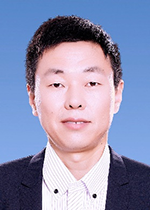
Associate Prof. Fugui Xie
Tsinghua University
An Adsorption Robot and Its Accuracy Issue in Machining of Large-scale Structures
Large-scale structures are the core parts of equipment in the fields of aerospace, energy, shipbuilding, etc., and their high-efficiency and high-quality manufacturing is an essential requirement. Typical examples include the machining of large-scale structural parts in large cabins and heavy-duty gas turbines, and the remote maintenance of large-scale equipment. Portable or movable high-performance multi-axis NC equipment is in urgent need. In order to realize the innovative design of such high-performance machining equipment and the R & D of the whole machine system, this report firstly studies a five-axis parallel machining module with focuses on innovative design of its mechanism, performance evaluation and kinematics optimization. Thereafter, it probes into the key technologies such as error compensation, feed rate planning, stiffness and elastic dynamics modeling, cutting force induced deformation compensation and vibration suppression, for high-efficiency and high-quality machining applications. This report also covers the development of a series of mobile robotic systems and their applications in the machining of typical parts such as the frame-type structural parts and large cabin, and in the drilling of structural components.
Dr. Fugui Xie is currently working as an associate professor and doctoral supervisor with the Department of Mechanical Engineering at Tsinghua University. He received his B. Eng. in Mechanical Engineering from Tongji University in 2005, and Ph.D. degree from Tsinghua University in 2012. He worked as a postdoctoral researcher at Tsinghua University from 2012 to 2014. He was an Alexander von Humboldt (AvH) Research Fellow at Fraunhofer Institute for Machine Tools and Forming Technology (IWU) in Germany in 2016. His research interests include robotics and mechanisms, parallel mechanisms and mobile machining robots. He has authored and co-authored 1 book, more than 100 technical papers including more than 70 journal articles. He has been authorized more than 90 invention patents. He has won the first prize of the Beijing Science and Technology Award (Technological Invention Award) and the first prize of the Chinese Machinery Industry Science and Technology Award. He was awarded the National Science Fund for Excellent Young Scholars. He has also served as an editorial board member of Machines and a youth editorial board member of CJME (China Journal of Mechanical Engineering).
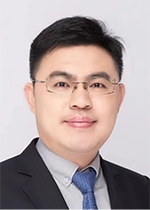
Prof. Jintao Wang
Chinese Academy of Sciences
Robots and Intelligent Manufacturing
Introduce the Current Situation of Industrial Robots; According to the New Requirements of Intelligent Manufacturing, the Development Trend of Industrial Robots Intelligent; And Give some Solutions to Develop Industrial Intelligence.
Jintao Wang, Professor of Chinese Academy of Sciences, Graduate Tutor Doctor, Senior Research Fellow, The State Council Special Allowance Expert of "Engineering Technology". Served as Vice President of SIASUN Robot & Automation Co.,Ltd., President of Industrial Robot BG, President of Tianjin SIASUN Robot Automation Co., Ltd., and now serve as President of Shandong SIASUN Industrial Software Research Institute Co., Ltd. He has long been engaged in R&D Innovation, Product Development and Industrialization in the field of Robotics, Industrial Software and Intelligent Manufacturing. He has won three Provincial First Prize for Science and Technology Progress Award, one Provincial Prize for Transformation Award of Science and Technology Achievements, one China Machinery Industry Science and Technology Award, and a number of Invention Patents and other Honors.
Session VI
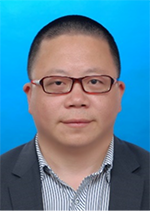
Prof. Meng Chen
Aerospace System Engineering Shanghai
Research on Key Technologies for Agile Operations and Precise Control of Space Robots
Aiming at the challenging problems of dexterous operation and precise control under complex illumination and narrow space constraints, the mechanism of restricted information feature extraction and multi-source information fusion is explored, the influence mechanism of spatial contact dynamics characteristics on compliance control is revealed, and the adaptive optimization method of compliance control parameters and the high-precision assembly blind search algorithm are proposed. The correlation law between tool function design and fine operation behavior under different dimensions and strong constraints is explored, and multi-parameter optimization, control strategy and performance evaluation methods are proposed. The mechanism of skill learning and transfer of dexterous operation of space robots is studied, and a method of skill transfer and generalization under non-preset scenarios is proposed. The demonstration and verification of typical operation tasks of space robots are carried out to enrich the theoretical system of smart operation and control, and support the long-term stable operation of the space station.
Prof. Meng Chen is now the Researcher and an Outstanding Academic Leader of Shanghai in the Institute of Aerospace System Engineering Shanghai (ASES). He is also the responsible expert for the intelligent technology field at the National Key Laboratory of Aerospace Mechanism (NKLAM), and the Deputy Director at Shanghai Key Laboratory of Spaceflight Mechanism (SKLSM). He got his MS in 2000 and PhD in 2003 all from Huazhong University of Science and Technology (HUST), China, and worked as a senior engineer and a researcher at ASES since 2003. He studied at the Institute of TAMS, University of Hamburg, Germany, as a visiting scholar funded by China Scholarship Council in 2013. His research areas are related with space docking mechanism, space robot, artificial intelligence, dynamic simulation and control. He has published 3 monographs, one national military standard, more than 60 high-level academic papers and 40 granted patents. He has led and participated in four key projects funded by National Natural Science Foundation of China. He was awarded four science and technology awards, including the Defense Science and Technology Innovation Team award and the First Prize of Military Science and Technology, etc.

Associate Prof. Chen Wang
Nanjing University of Aeronautics and Astronautics
Design and Coordinated Control of a Bio-inspired Landing Mechanism Based on Skeleton/Muscle System
After the success of three-step lunar exploration, China will explore lunar polar regions and leap over pits under shadows in the future. The current passive landers absorb impact energy by aluminum honeycomb, which cannot adapt their attitudes and damping forces according to the complex environment. However, the lunar polar surfaces include steep slopes, meteorites, pits, and soil with discrete mechanics. According to these engineer requirements and scientific problems, an energy-distributed absorption and adaptive mechanism of cats’ four legs for landing on complex surfaces are explored. A bio-inspired landing mechanism is designed based on cats' skeletal/muscular systems, which can absorb the impact energy uniformly by four legs. Furthermore, a coordinated control law of damping forces under uncertain conditions such as complex lunar surface environments and difficult prediction of lander attitude are researched. The proposed lander can improve the landing performance and range, which is expected to provide theories for the design of Chinese future landers for lunar polar regions.
Chen Wang is currently an Associate Professor at the College of Astronautics, Nanjing University of Aeronautics and Astronautics. He is a recipient of the Young Elite Scientists Sponsorship Program by CAST. He obtained his PhD in Flight Vehicle Design from Nanjing University of Aeronautics and Astronautics. His research focuses on landing mechanism design and dynamic analysis, on-orbit manipulation mechanism design and control. He has more than 20 publications in space mechanism journals and conferences including Applied Mathematics and Computation, Acta Astronautica, Journal of Astronautics, etc. His research has led to more than 17 patents, 1 book, and the Second Prize of Jiangsu Science and Technology Award (2022).
Session VII
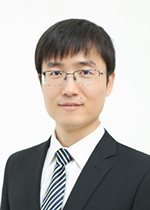
Prof. Jianmin Li
Tianjin University
Kinematic Design of the MicroHand Minimally Invasive Laparoscopic Surgical Robot
Laparoscopic surgical robot is a great breakthrough and representation for the fusion of robotics and medical science, as well as a hotspot of interdisciplinary research. Based on the advantages and limitations of laparoscopic surgical techniques, this speech summarizes the design objectives, constraints, and design requirements of robot-assisted technology. Taking the self-developed MicroHand laparoscopic surgical robot as a typical case, it introduces the design method of the specialized mechanisms, imaging system, interaction system, and control system for laparoscopic surgical operations, as well as the design and validation of system integration, animal experiments and clinical trials. By combining the advantages of robot operations, it further presents the achievements of integrating the MicroHand system with the communication technique for assisting the clinic trial of remote laparoscopic surgery. Finally, the kinematics design of the laparoscopic surgical robot is concluded and the future development trends are discussed.
Dr. Jianmin Li is a professor at Tianjin University and received the National Science Fund for Excellent Young Scholars. Prof. Li has conducted long-term research on the basic theories and key technologies of laparoscopic surgical robot, and solved the basic problems such as cable transmission mechanism in confined space, the synthetic approach of RCM mechanisms in a broader sense, and the end-to-end mapping for master-slave isomerism. Prof. Li, together with his research group, has successfully developed the MicroHand robot system, the first laparoscopic surgical robot in China, completed the first clinical trial for the domestic laparoscopic surgical robot and the first multi-center controlled clinical trial, realized the world’s first clinical trial for 5G remote laparoscopic surgery with the largest single-center sample size, and achieved the first registration certificate for the domestic laparoscopic surgical robot, breaking the technological monopoly by foreign countries. Currently, Prof. Li serves as a guiding expert for the National Key Research and Development Program of China for intelligent robots, an expert in the responsible unit for medical robot standardization, etc. He has published 40 SCI papers as the first or corresponding author (including one platinum recommended and one highly SCI-cited), and won some key awards such as the second prize of the National Technology Invention Award (ranked second) and the special prize of Tianjin Technical Invention.

Prof. Rui Chen
Chongqing University
General Design Theory and Methodology for Compliant Mechanisms
Compliant mechanisms facilitate the transmission of motion and energy through the elastic deformation of the structure. Compared to traditional rigid mechanisms, they show the advantages of easy integration, friction-less, lubrication-free, etc. Due to their high precision and high reliability, they have a wide range of potential applications in the fields of micro-manipulation, aerospace, etc. The design and analysis of compliant mechanisms face many challenges, such as the complexity of solving large nonlinear deformations, which makes accurate modelling difficult, and the lack of effective theoretical design methodology in the design process. This report mainly focuses on the accurate modeling and innovative design difficulties in the case of large deformation of compliant mechanisms, discusses the model-based general design methodology for compliant mechanisms, and introduces its research progress on typical compliant mechanisms, such as high-precision compliant planar parallelogram mechanism, compliant deployable mechanisms, and compliant constant torque mechanisms.
Rui Chen is a professor at Chongqing University and a Bayu Young Scholar of Chongqing. He is currently the deputy director of the International Cooperation and Exchange Office of Chongqing University, and was the deputy dean of the School of Mechanical and Transport Engineering. He is a member of the Intelligent Robotics Committee of the Chinese Artificial Intelligence Society, a member of the Intelligent Robotics Committee of the Chinese Computer Society, and a member of the Unmanned Systems Committee of the Chinese Command and Control Society. He has long focused on the research of bionic soft robots and compliant mechanisms, and has published several representative high-level papers in Nature Communications, TRO, Soft Robotics, MMT and other journals in the past five years, and won the first prize of Chongqing Scientific and Technological Progress.
Session VIII
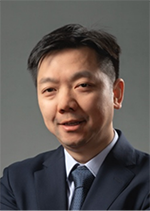
Prof. Genliang Chen
Shanghai Jiao Tong University
Integration of Structure, Actuation, and Sensing of Rigid-Elastic-Soft Hybrid Mechanisms
Hybrid mechanisms incorporating rigid, elastic, and soft components, are an emerging form of robotics that bridges the gap between traditional rigid-body linkages and noval soft robots. Leveraging the structural compliance of elastic links, this novel kind of mechanism promises a broad range of potential applications in bio-mimetic robotics and human-robot collaboration. However, due to the complex deflection behaviors of elastic links and soft actuators, there are still significant challenges in the kinetostatic modeling, environmental perception, and actuation of structural deformations. In this talk, I will present our recent research progress on this topic, including kinetostatic modeling, contact/tactile sensing, and pneumatic actuation of rigid-elastic-soft hybrid mechanisms. Various case studies will be provided to demonstrate the advantages of such novel mechanisms, i.e. the adaptivity to unstructured environments, sensor-based interactive manipulation, and fast-response operation. Additionally, the prospects and challenges for future research on these hybrid mechanisms will be addressed at the end of this talk.
Prof. Genliang Chen received his B.S. and Ph.D. degrees, both in Mechanical Engineering, from Shanghai Jiao Tong University (SJTU), Shanghai, China, in 2006 and 2014, respectively. From the year 2016 to 2017, he was with the Biomimetic and Dexterous Manipulation Laboratory (BDML), at Stanford University, as a visiting scholar. He joined the School of Mechanical Engineering at SJTU, in 2018. Currently, he serves as the Deputy Director of the META Robotics Institute at Shanghai Jiao Tong University. His research interests include biomimetic robotics, flexible parallel manipulators, and multibody dynamics. Prof. Chen received the Outstanding Youth Fund from the NSFC in 2020, and the Xiong Youlun Zhihu Outstanding Young Scholar Award in 2018. He is serving as the associated editor of ‘Robotica’, ‘Meccanica’, et al. He has published more than 80 journal papers, including Science Advances, IEEE T-RO, T-IE/TASE, IEEE/ASME TMECH, Science China-Tech. Sci., MMT, and ASME JMR/JMD, and among others. He has been honored with the Best Paper Award/Finalist from several international conferences, including Parallel 2020 and IEEE-ICIEA2023.

Prof. Yanbiao Li
Zhejiang University of Technology
Simulation and Ground Testing of Solar Wings in Space Environment for Large Complex Structures
The successful deployment of solar wings is an important index of a successful spacecraft launch. With the diversification of space missions, solar wings have evolved from the rigid structures to flexible, multi-panel two-dimensional designs, making their deployment mechanisms more complex. Therefore, ground testing is essential for the successful in-orbit deployment of solar wings, since the technology for simulating the space environment and conducting ground tests for large solar wings has long been monopolized by Western countries. Professor Yanbiao Li's team, after nearly two decades of collaborative efforts between industry, academia, and research, has overcome key technological challenges and applications in simulating the space environment and conducting ground tests for large, complex solar wing structures. Prof. Li’s team have invented a series of critical technologies, including gravity balance for large components, near-zero resistance aerodynamics, non-resistance transmission and long-distance air flotation follow-up control, and ultra-low frequency modal testing for large flexible components. Moreover, they have developed the country's first multi-dimensional constant force suspension device, full air flotation deploying equipment for Solar wings, and ultra-low frequency modal testing equipment for large solar wings, achieving the successful implementation of the entire process of large solar wing space environment simulation and ground testing, from "floating" to "deploying" to "moving."
Yanbiao Li, Doctor, Professor, Doctoral Supervisor, is the recipient of the Zhejiang Provincial Natural Science Foundation for Outstanding Youth and serves as the Deputy Dean of the School of Mechanical Engineering at Zhejiang University of Technology. He is the Deputy Secretary-General and the Standing Committee Member of the Space Mechanisms Committee of the Chinese Society of Mechanical Engineering and the member of the editorial board of the Chinese Journal of Mechanical Engineering. Prof. Li has presided eight national, provincial, and ministerial projects, including the Regional Joint Key Projects of National Natural Science Foundation of China, the General Program of National Natural Science Foundation of China, and the Major Projects of the Zhejiang Provincial Natural Science Foundation. He won the Second Prize of the Scientific and Technological Progress Award from the Ningxia Hui Autonomous Region in 2021, the Second Prize of the Zhejiang Provincial Science and Technology Invention Award in 2022 and the Second Prize of the Technology Invention Award from the China Machinery Industry Federation in 2022. and the Second Prize of the Scientific and Technological Progress Award from the China Machinery Industry Federation in 2023.
Session IX

Associate Prof. Yifeng Song
Shenyang Institute of Automation, Chinese Academy of Sciences
Highly Adaptable Wall-Climbing Robots: Reaching Somewhere Human Can't Reach
Along with the development of human society, there is an increasing practical need for vertical surface operations. The wall-climbing robot, with its flexible mobility and environmental adaptability, offers a new approach to operational tasks in various industries such as electric power, new energy, water conservancy, and nuclear industry. Our objective is to develop highly environmentally adaptable wall-climbing robots. In response to complex environments including curved surfaces, trench surfaces, and spanning surfaces, we are currently focused on developing robots that do not rely on complex multi-joint collaborative motion control regulation but instead achieve autonomous configuration adjustments to adapt to environmental characteristics through flexible deformation and mechanism variation in robot mechanisms. We shall discuss several types of wall-climbing robots in the engineering field and explore the impact of mechanism design on the robot's adhesion stability and mobile mobility, the interaction relationship between adhesion and mobility, as well as the energy efficiency state of wall-climbing robot operations. Our research aims to enhance the environmental adaptability and energy efficiency of wall-climbing robots while expanding their application scope.
Yifeng Song is an associate professor at Shenyang Institute of Automation, Chinese Academy of Sciences. He has got his Bachelor of Engineering (2007) at the School of Mechanical Science & Engineering of Huazhong University of Science and Technology, Wuhan, China, and his Ph.D. (2014) at the University of Chinese Academy of Sciences, Beijing, China. During his doctoral studies, he won the DAAD-CAS scholarship and studied at Universität Hamburg for one and a half years in the doctoral joint promotion program. His research interests cover specialized robots and robotic mechanisms. He is now applying himself to the robot mechanism design with high adaptability, compliance, and stability toward harsh environments and multi-tasks. He has lead a number of major projects such as the National Key R&D Program (subject level), NSFC General Program, the South China Power Grid Key Scientific and Technological Projects, etc. He has published more than 30 papers in related fields, and some of the results have been published in MMT, Robotica, IEEE transaction and other well-known journals. He has applied for more than 20 patents for inventions, including 2 international patents. Besides his scientific work, he serves International Research Centre for Advanced Robotics & Mechanism certified by the Ministry of Science and Technology of P.R. China as the academic secretary for a widely international academic exchange.
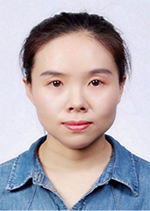
Associate Prof. Rui Nie
Tianjin University
Deployment analysis and surface design of mesh reflector antennas
Space antennas play an indispensable role in aerospace communication, military reconnaissance, deep-space probes, global broadcasting, remote sensing, and climate forecasting. Mesh reflector antennas gradually become the mainstream of space antennas for their characteristics of large aperture, lightweight, and high surface accuracy (high operating frequency). The antenna turns from a stowed state to a fully deployed configuration and finally forms a required functional surface. Smooth deployment is essential for the duty service, so accurate and efficient dynamic modelling and analysis of the deployment process is essential. One big challenge is the accurate dynamic modelling and analysis of the cable-truss mechanism in the deployment, which is essential for the driving design of the targeted deployment motion. The other key problem is form-finding, which plays an essential role in surface design and concerns electromagnetic performances. Classic form-finding methods ignore the compatible deformation between cable networks and supporting structures, which leads to poor surface accuracy. We are dedicated to the research on reliable deployment and the high-accuracy forming of mesh reflector antennas. A dynamic design method for rigid-flexible-soft multi-body systems is proposed, and the accurate simulation of the deployment as well as the driving design aiming at the desired dynamic behaviors is achieved. The scaled prototype is fabricated and the deployment experiment is conducted to verify the correctness of the dynamic modelling. The integrated form-finding method for structures with cables, beams, and hinges is proposed, which improves the design accuracy of mesh antennas by order of magnitude and realizes the accurate forming of large-scale mesh antennas.
Rui Nie, Associate Professor at the School of Mechanical Engineering, Tianjin University, Ph.D. supervisor. Nie is mainly engaged in the optimization design of space deployable structures, multi-body system dynamics, and the research and development of aerospace equipment. As the principal investigator, she has led more than ten projects funded by the National Natural Science Foundation of China, the National Key Research and Development Plan, the Beijing Natural Science Foundation, and others. Nie has published over 20 papers as the first author/corresponding author in journals such as M&D, IJMS and ND. She also received the first prize for technological invention in Tianjin and was selected for the "Young Elite Scientist Sponsorship Program" by the China Association for Science and Technology.
Session X

Prof. Gui-Bin Bian
Institute of Automation, Chinese Academy of Sciences
Intelligent microsurgical ophthalmology robot
Microsurgical robots are an organic combination of precision surgery and intelligent control. They can assist surgeons in achieving high-precision, high-dexterity, and high-standardized surgical operations in multiple microsurgical procedures. They are one of the important branches of medical surgical robots. This report takes micro-ophthalmic surgery as the starting point, reviews its historical evolution and cutting-edge achievements, introduces the boosting role of microscopes and surgical instruments in its development, and points out that the new generation of micro-ophthalmic surgical robots is an intelligent surgical system with stronger operational autonomy and flexibility, higher control accuracy, more comprehensive auxiliary functions, and more complete postoperative feedback. The report also explains several key technologies of micro-ophthalmic surgical robots, including the development of intelligent surgical instruments, real-time multimodal navigation methods during surgery, robot intelligent control, and intelligent surgical evaluation. Finally, it looks forward to the future opportunities and challenges of micro-ophthalmic surgical robots.
Gui-Bin Bian, Professor at the Institute of Automation, Chinese Academy of Sciences. His research direction is intelligent surgical robots. As the project leader, he presided over the National Key R&D Program, the National Major Scientific Research Instrument Development Project of the NSFC, and the Innovation Cross-Team Project of the Chinese Academy of Sciences. He has published more than 60 SCI papers, won 5 international conference paper awards, and 2 ESI highly cited papers. He has been authorized with 54 domestic and foreign invention patents and participated in the drafting of 1 national standard. As the first finisher, he won the first prize of the Technical Invention Award of the Chinese Instrument Society and the first prize of the Invention Innovation Award of the China Invention Association. He won the Nomination Award for Powerful Young Scientists. He served as the chairman of the Youth Innovation Promotion Association of the CAS, a member of the Special Expert Group of the Ministry of Science and Technology's 14th Five-Year Plan for "Basic Scientific Research Conditions and Major Scientific Instruments and Equipment R&D", and an expert member of the National Public Service Robot Standardization Working Group. He was selected as an outstanding member of the Youth Promotion Association of the Chinese Academy of Sciences, Beijing Outstanding Youth and Beijing Science and Technology Star.

Associate Prof. Weixing Chen
Shanghai Jiao Tong University
An energy self-sustaining ocean robot integrated with in-situ wave energy converter
The lack of continuous power supply constrains the performance of ocean robots when executing ocean operations. Extracting energy from the wave is a feasible solution for ocean robots to overcome the energy limitations. However, the power output of existing in-situ wave energy converter (WEC) is restricted by their power generation principle and can hardly meet the power demand of the robot. Here we propose a novel wave-powered ocean robot that possesses two operation modes: namely the WEC mode and the Robot mode. In the WEC mode, the robot floats to the sea surface and expands the wing to enlarge the energy harvesting surface. Then, the robot converts the wave energy into the relative rotation between the body and wings, driving the generator to produce electricity and charge the battery. When switched into the Robot mode, the ocean robot folds the wing to reduce the sailing resistance and execute underwater operations. Based on this working principle, the coupled fluid-electric-mechanical dynamic model that describes the wave energy harvesting process is established in both time domain and frequency domain. Then, the prototype that integrates the function of mode switching and wave energy capturing is designed and fabricated. In the wave tank experiment, the feasibility of working with two operation modes is demonstrated and the wave energy capturing performance under regular waves is tested, verifying the accuracy of the dynamic model. Finally, the sea trial is conducted near Dongji Island, Zhoushan, where the experiment results show that the average power output of the prototype in sea state 3 reaches up to 20W.
Weixing Chen, Associate Professor at the School of Mechanical Engineering, Shanghai Jiao Tong University, Ph.D. supervisor, and Director of the Marine Intelligent Equipment Research Center at Shanghai Jiao Tong University. Chen is engaged in research on energy self-sustaining ocean robots, wave energy harvesting technology, wave compensation technology of parallel robot, and other related areas. As the principal investigator, he has led more than ten projects funded by the National Natural Science Foundation of China, the National Defense Science and Technology Innovation Zone, and others. Chen has published over 40 SCI papers as the first-author/corresponding-author in journals such as MMT and JMR, and granted more than 20 national invention patents. He also serves as a young editorial board member for "Journal of Mechanical Transmission" and an editorial board member for "Ship Engineering."
Session XI
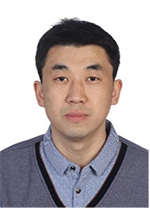
Associate Prof. Zhufeng Shao
Tsinghua University
Cable-driven parallel robots and Rigid-flexible robots
As an important part of intelligent manufacturing, R & D, manufacturing and application of robots become important indication to reveal the national scientific and technological innovation ability and the level of manufacturing industry. The cable-driven parallel robot (CDPR) is the combination of cable drive technology and parallel mechanism theory. It inherits the high acceleration and load capacity of parallel mechanism, and at the same time obtains significant improvements in workspace, lightweight and energy efficiency. The CDPR has become a frontier hotspot in the field of mechanism and robotics, which has an irreplaceable important role in the fields of industry, national defense, science and technology. The cable-driven parallel robot embodies the cutting-edge trend of the fusion of rigid and flexible robot equipment, reflects the advanced lightweight design, and is an important direction for the future development of robot science and technology. This talk will discuss the issue of how to further improve the performances of robotic systems by constructing rigid-flexible robots based on the cable-driven parallel mechanism.
Zhufeng Shao is an associate professor of Mechanical Engineering Department at Tsinghua University, senior member of China Society of Mechanical Engineering, member of national industrial foundation expert committee, editorial board member of Defense Technology journal and member of national professional standards technical committee. He is also the director of intelligent equipment and system research center at Tsinghua University WUXI research institute of applied technologies. His principal research interests include cable-driven parallel robots, soft robots and intelligent manufacturing. His research results have been applied to major projects such as the FAST (Five-hundred-meter Aperture Spherical radio Telescope), domestic large aircraft and high tech ship, lunar exploration, and promoted the performance breakthrough of the high-speed robot. He has published 46 SCI and 36 EI papers, issued 7 approved national standards related to intelligent manufacturing, obtained 55 authorized Chinese invention patents and 16 software copyrights, and edited two monographs. He has won the China patent silver award, the second prize of natural science of the ministry of education, the special prize and the second prize of China machinery industry science and technology award.

Prof. Yanjiang Huang
South China University of Technology
Design and Analysis of Cable-driven Anthropomorphic Serial-parallel Hybrid Manipulator
Due to the advantages of small mass and inertia, and adjustable compliance, cable-driven anthropomorphic manipulators have attracted widespread attention. However, the long transmission chain, low stiffness, and nonlinear friction factors inherent in cable drive systems pose many challenges in the implementation process. The talk will discuss the design of a cable-driven series-parallel hybrid anthropomorphic manipulator, and the study from the perspectives of configuration analysis, motion and error modeling, stiffness and static analysis.
Yanjiang Huang is a full professor of School of Mechanical and Automotive Engineering at South China University of Technology. He received Ph.D from the University of Tokyo, Japan, 2013. His major research interests include robot system design and human-robot collaboration. He has published over 40 high-level journal and conference papers in the field of robotics, including publications in TRO, T-Mech, MMT, TASE, ICRA, and IROS.
Session XII
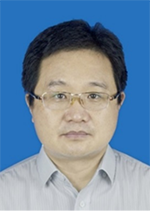
Prof. Huafeng Ding
China University of Geosciences
Digital Innovation Design of Mechanisms
The mechanism is the “skeleton” of mechanical equipment, and its design level determines the performance of the mechanical equipment. The configuration innovation of the mechanism is the “source” for the development of high-performance mechanical equipment with independent intellectual property. We are focused on the digital innovation design of mechanisms of advanced mechanical equipment. We have established the loop algebra theory for kinematic chains and resolved the difficult problem of detecting isomorphism. We present a digital synthesis theory for simple-joint kinematic chains, based on which we have established the unified synthesis framework for multiple-joint and geared kinematic chains, and for the first time established the most complete atlas database of topological structures of planar mechanisms. By applying the theory to engineering practice, we have developed several new advanced equipment such as the face-shovel excavator, forging manipulator, geared transmission and robot. Our objective is to develop a systematic theory of intelligent creation of advanced equipment that integrates synthesis, analysis and optimization, and provide new theories and new technologies for the innovation of advanced equipment.
Dr. Huafeng Ding is a Professor and the dean of the School of Mechanical Engineering and Electronic Information, China University of Geosciences. He received his first Ph.D. in Robotics and Mechatronics from Yanshan University, China, in June 2007. He received his second Ph.D. in Mechanics and Robotics from University of Duisburg-Essen, Germany, in February 2015. He worked as an Alexander von Humboldt Fellow in Germany from 2010 to 2012. he won the Natural Science fund for Outstanding Youth Scholars and the Fok Ying-Tong Education Foundation. His research interests include structural synthesis of mechanisms, conceptual design, control and applications of planar and spatial mechanisms. He has published more than 130 research papers in related fields, and over 60 results have been published in MMT, ASME transaction, IEEE transaction and other well-known journals, 2 book published by Springer. He has more than 50 patents for his inventions. He is Associate Editor for the International Journal of Mechanism and Machine Theory, Journal of Mechanical Engineering, and China Mechanical Engineering.

Prof. Junhui Zhang
Zhejiang University
Advancements in Parameter Identification and Motion Planning for Hydraulic Manipulators
Hydraulic manipulators are critical working mechanisms of heavy engineering equipment, such as excavators and cranes, playing irreplaceable roles in key sectors of the national economy, including construction, mining, agriculture, and forestry. With an aging population and rising labor costs, there is an increasing need to improve the autonomy of hydraulic manipulators. However, compared to electrically driven industrial robots, multi-DOF hydraulic manipulators face significant challenges due to their large inertia, low damping, and joint coupling. These characteristics result in low control accuracy and complex motion constraints, making autonomous operation in unstructured environments particularly difficult. This report will discuss the physical feasibility conditions of the dynamic parameters of hydraulic manipulators and their use in improving model accuracy. Then, a new tool called the "Flow Manipulability Polytope" will be introduced for evaluating the velocity performance of hydraulic manipulators in motion planning. These research advancements are dedicated to enhancing the autonomous operation capabilities of hydraulic manipulators.
Prof. Junhui Zhang received the Ph.D. degree in mechatronics engineering from Zhejiang University, Hangzhou, China, in 2012. He is currently a Tenured Associate Professor with the Institute of Mechatronic Control Engineering, and the Deputy Director of the State Key Laboratory of Fluid Power and Mechatronic Systems, Zhejiang University. He has authored or coauthored more than 80 papers indexed by SCI and applied more than 30 National Invention Patents with granted. He is supported by the National Science Fund for Excellent Young Scholars. His research interests include high-speed hydraulic pumps/motors, hydraulic manipulators and hydraulic quadruped robots.

